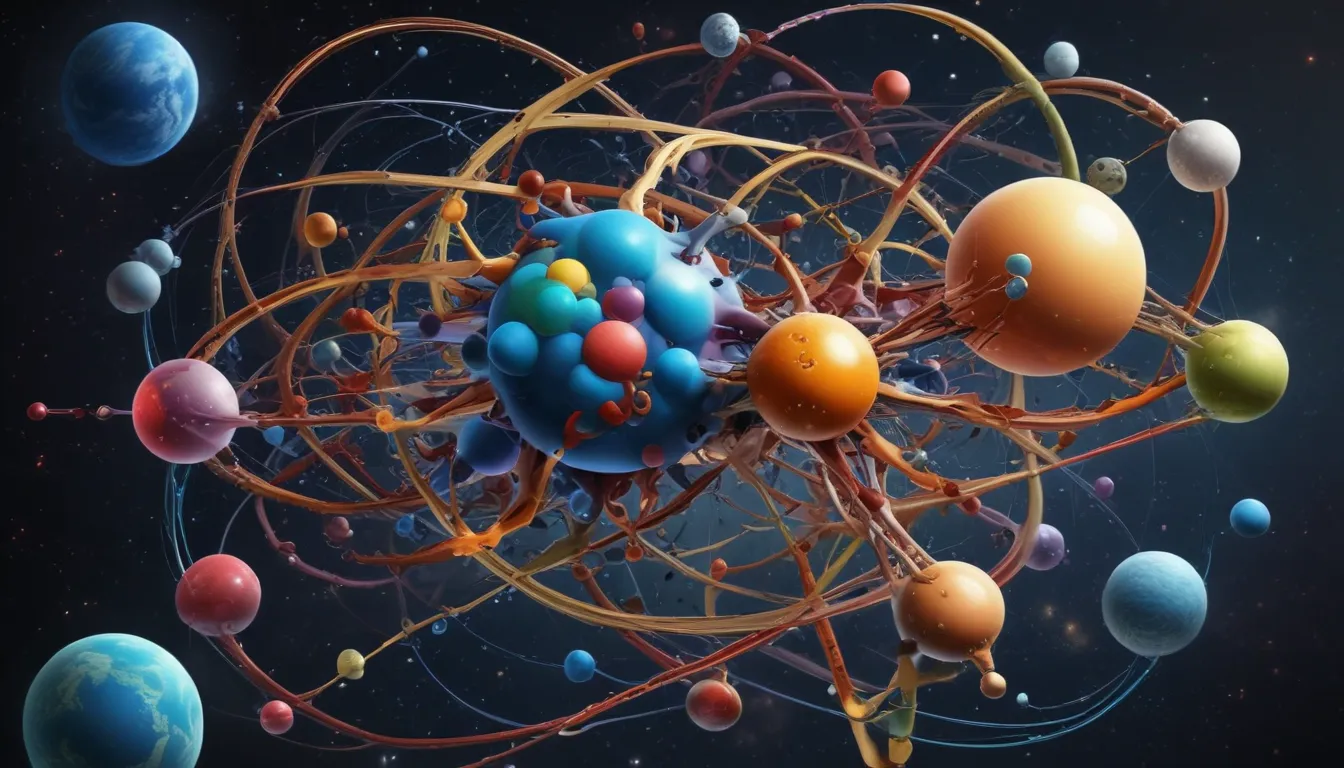A Note About Images: The images used in our articles are for illustration purposes only and may not exactly match the content. They are meant to engage readers, but the text should be relied upon for accurate information.
Chemistry enthusiasts and students alike are often captivated by the intricate world of Molecular Orbital Theory. This fundamental concept delves into the bonding and electronic structure of molecules, unraveling the mysteries of chemistry. In this article, we will embark on a journey to discover 17 astounding facts about Molecular Orbital Theory, shedding light on its significance and applications in the realm of science.
Unveiling the Magic of Molecular Orbital Theory
Molecular Orbital Theory serves as a crucial cornerstone in chemistry, offering profound insights into the formation and properties of molecules. By examining electron interactions and energy levels within substances, this theory unveils the secrets behind chemical bonding, stability, reactivity, and spectroscopic properties. It’s like deciphering a molecular puzzle that holds the key to understanding the building blocks of matter. Whether you’re a budding chemist or a curious mind eager to explore the wonders of molecules, these facts are sure to ignite your passion for the intricacies of chemistry.
Key Revelations of Molecular Orbital Theory:
-
Understanding Chemical Bonding: Molecular Orbital Theory elucidates the process of atoms coming together to form molecules. It sheds light on the intricate dance of electrons and energy levels within molecules, offering a deeper comprehension of their interactions.
-
Atomic Orbitals Unite: The essence of Molecular Orbital Theory lies in the fusion of atomic orbitals from different atoms to create molecular orbitals. These molecular orbitals can host a maximum of two electrons, adhering to the principles of electron filling and the Pauli exclusion principle.
-
Bonding vs. Anti-bonding Orbitals: Within Molecular Orbital Theory, two types of molecular orbitals emerge: bonding and anti-bonding orbitals. Bonding orbitals result from constructive interference, strengthening the electron density between nuclei, while anti-bonding orbitals arise from destructive interference, creating a node between the nuclei.
Decoding Molecular Interactions
The visualization of molecular interactions within Molecular Orbital Theory can be graphically represented through an interaction diagram. This diagram illustrates the energy levels of atomic orbitals and the resultant molecular orbitals, distinguishing between bonding and anti-bonding orbitals. By understanding these interactions, chemists can predict molecule stability, shapes, and magnetic properties.
Unraveling Molecule Stability and Bond Orders
The stability of a molecule is intricately linked to the population of its molecular orbitals. A higher population of bonding orbitals signifies molecule stability, whereas pre-dominance of anti-bonding orbitals signals a less stable molecule prone to chemical reactions. Calculating the bond order provides a quantitative measure of the bond strength between atoms, reflecting the balance between bonding and anti-bonding electrons.
Delving into Molecular Orbital Shapes and Strengths
The strength of chemical bonds is directly correlated to the extent of overlap between atomic orbitals involved in bonding. Enhanced overlap results in stronger bonds due to heightened electron density between nuclei. Additionally, Molecular Orbital Theory offers insights into molecular shapes, as molecular orbitals’ spatial distribution and electron density between nuclei dictate the molecule’s structure.
Embracing Hybridization and Spectroscopic Techniques
Hybridization, a pivotal concept within Molecular Orbital Theory, elucidates the amalgamation of atomic orbitals to form hybrid orbitals. These hybrid orbitals subsequently combine with other atomic or hybrid orbitals to generate molecular orbitals, shaping the structural composition of molecules. Moreover, spectroscopic techniques leveraging Molecular Orbital Theory play a vital role in determining molecular structures and analyzing electronic transitions, providing invaluable information on energy levels and bonding within molecules.
A Glimpse into Unique Molecular Properties
Molecular Orbital Theory unveils the phenomenon of electron delocalization in conjugated systems, such as aromatic compounds like benzene. The delocalized pi (?) molecular orbitals bestow distinctive properties upon these molecules, including heightened stability and unique reactivity. Similarly, molecules featuring multiple bonds, such as double or triple bonds, can be elucidated through the concept of overlapping atomic orbitals giving rise to diverse molecular orbitals.
Predicting Magnetic Properties and Enhancing Drug Design
The predictive prowess of Molecular Orbital Theory extends to prognosticating the magnetic properties of molecules. Paramagnetic molecules bearing unpaired electrons in their molecular orbitals exhibit attraction to magnetic fields, whereas diamagnetic molecules showcase paired electrons. Furthermore, Molecular Orbital Theory’s significant contribution to drug design and computational chemistry lies in its ability to decipher the electronic structure and interactions within molecules, aiding in the design of efficacious drugs and predicting biological activity.
Unveiling the Power and Scope of Molecular Orbital Theory
While Molecular Orbital Theory stands as a beacon of knowledge and innovation in the realm of chemistry, it does possess limitations and approximations. This theory operates on the fundamental principles of quantum mechanics, providing a robust mathematical framework to contemplate electron behavior and energy levels within molecules. However, it simplifies complex systems by assuming independent electron motion and overlooking crucial factors like electron-electron repulsion and correlation.
Unleashing the Potential of Scientific Discovery
In conclusion, Molecular Orbital Theory serves as a catalyst for unraveling the enigmatic properties and behaviors of molecules. By amalgamating atomic orbitals, scientists can unlock novel molecular structures and predict various molecular phenomena. This profound understanding not only aids in unraveling chemical reactions and molecular properties but also propels advancements in pharmaceuticals, materials science, and environmental studies. The 17 captivating facts shared in this article underscore the profound impact and relevance of Molecular Orbital Theory in the domain of chemistry, fostering innovation, scientific exploration, and groundbreaking discoveries.
FAQ: Navigating the Insights of Molecular Orbital Theory
-
What is molecular orbital theory?: Molecular Orbital Theory is a foundational concept in chemistry that elucidates the behavior and properties of molecules through the integration of atomic orbitals.
-
How does molecular orbital theory contribute to scientific innovation?: By unraveling the mysteries of molecular behavior, Molecular Orbital Theory empowers scientists to make groundbreaking discoveries, develop innovative materials, and design superior drugs.
-
Can molecular orbital theory be applied to all molecules?: Yes, Molecular Orbital Theory can be applied to all molecules, irrespective of their complexity, offering a comprehensive framework to comprehend their behavior and properties.
Unlocking the Path to Discovery
As we journey through the realm of Molecular Orbital Theory, we witness the intricate tapestry of molecular interactions and structure, unveiling the hidden marvels of chemistry. Each fact explored serves as a stepping stone towards unlocking the mysteries of molecular behavior and properties. With a steadfast commitment to quality and authenticity, we invite you to delve deeper into the realm of chemistry, uncovering the wonders of Molecular Orbital Theory and embracing the endless possibilities it offers for scientific innovation and exploration.






